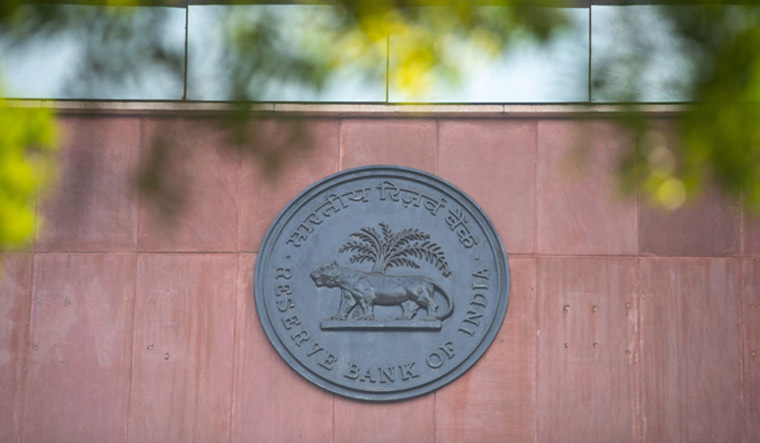The Reserve Bank of India’s monetary policy committee left the policy repo rate unchanged, but its overall tone was more hawkish and it has signalled to the market that there will be a calibrated removal of its accommodative stance, by announcing steps like the normalisation of the liquidity adjustment facility (LAF) corridor, economists said on Friday.
As was largely expected, the RBI MPC kept the repo rate on hold at 4 per cent. At the same, it lowered its GDP growth projection for 2022-23 to 7.2 per cent from 7.8 per cent and placed several red flags on inflation, which is now expected to average 5.7 per cent in the current financial year, compared with the 4.5 per cent it had projected earlier, given the sharp spike in commodity costs in the wake of the Russian invasion of Ukraine.
“The central bank had already begun normalising its policy last fiscal by absorbing excess liquidity through variable rate (reverse repo) operations. During Friday’s policy review, it took a concrete step by restoring the policy rate corridor under LAF to pre-pandemic width of 50 basis points, by introducing a standing deposit facility (SDF) at 3.75 per cent as the floor of this corridor. The RBI has thus signalled shifting focus from reviving growth to mitigating inflation risks,” said Dharmakirti Joshi, chief economist at CRISIL.
Tools like SDF will be needed to manage durable liquidity and the fixed reverse repo rate, which was left unchanged at 3.35 per cent, will now become largely redundant as it will now be only used at the discretion of the RBI, said Madhavi Arora, lead economist at Emkay Global Financial Services.
“With reaction function pivoting back towards inflation overgrowth as a policy priority, the policy bias is clear. Thus, to that extent, RBI no longer remains a stout dove and the reaction function is now evolving with fluid macro realities,” said Arora.
If the state of the market before the MPC meet was whether the signal will stay green for longer or turn red, that signal just turned orange, is how Aurodeep Nandi, India economist and vice-president at Nomura Securities summed up the policy. He said that migrating to the SDF rate as the effective lower bound of the policy corridor at 3.75 per cent was “tantamount to a hike in the floor rate.”
“While the RBI is still maintaining its accommodative stance, it is interesting that within a span of the last couple of months, the RBI has gone from being ultra-accommodative to talking about withdrawal of accommodation, in sync with our view that a pivot in monetary policy trajectory has been on the offing,” said Nandi.
The SDF will effectively transfer the liquidity management control to banks as they can now manage liquidity without collateral, a move that will also enable faster policy transmission, feels Arun Singh, the global chief economist at Dun & Bradstreet.
A major reason driving this shift in RBI’s strategy is a spike in commodity costs in the backdrop of the Russia-Ukraine conflict. Surging prices of oil and other commodities are driving companies to raise prices of everything from cars to cookies. This could lead to core inflation rising above 6 per cent.
What RBI will also have to consider is the fact that global central banks like the US Federal Reserve have begun raising interest rates and their monetary policies are only going to harden further, which will have reverberations on emerging markets in terms of foreign fund flows.
“RBI has shifted towards hawkishness acknowledging the increasing upside risks to inflation. The withdrawal of accommodation tilt is clear by the normalisation of the effective policy corridor to pre-Covid levels of 50bps,” said Upasna Bhardwaj, senior economist at Kotak Mahindra Bank.
Bhardwaj expects the RBI MPC to change its policy stance to “neutral” in the next meeting in June and raise repo rates in the current financial year ending March 2023 by 50 basis points starting in August. Indranil Pan, chief economist at Yes Bank also expects the MPC to change its stance to "neutral" in June and the first repo rate hike could happen in August.
Arora from Emkay also feels the MPC stance will formally change in the next policy and rate hikes could happen from August.
CRISIL’s Joshi expects the RBI to raise the repo rate this year by 50-75 bps starting June, with the pace of tightening guided by the surprises from inflation and external risks, he said.
“Given the current macro-dynamics, MPC announcements were a tight rope walk that has delivered on re-calibrating growth-inflation projections, signalling impending hikes and still buying time to hike lending rates,” said Rajni Thakur, chief economist at RBL Bank.
Thakur expects two repo rate hikes by the RBI MPC this year, most likely starting in the second quarter (July September).





